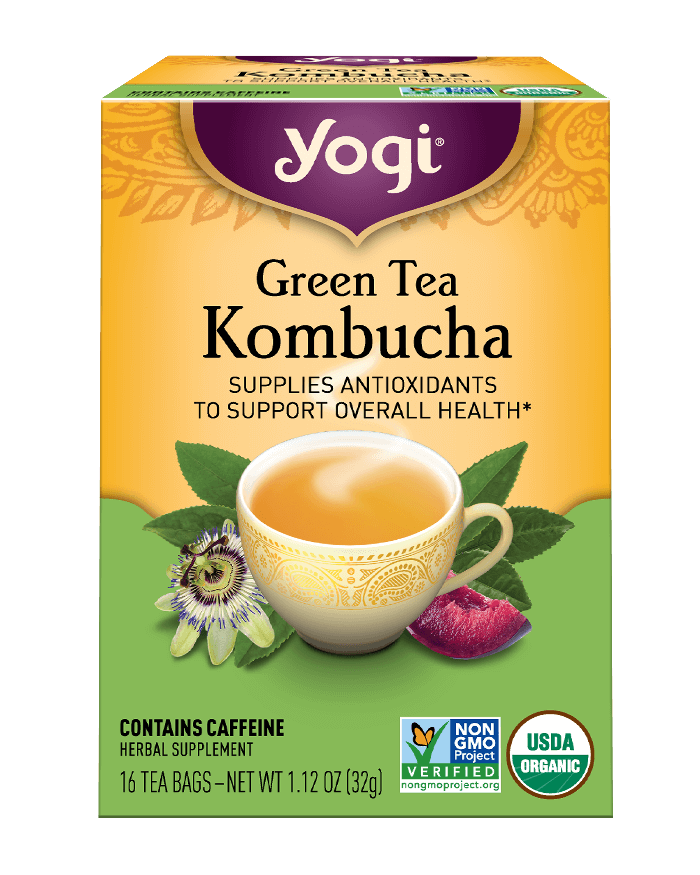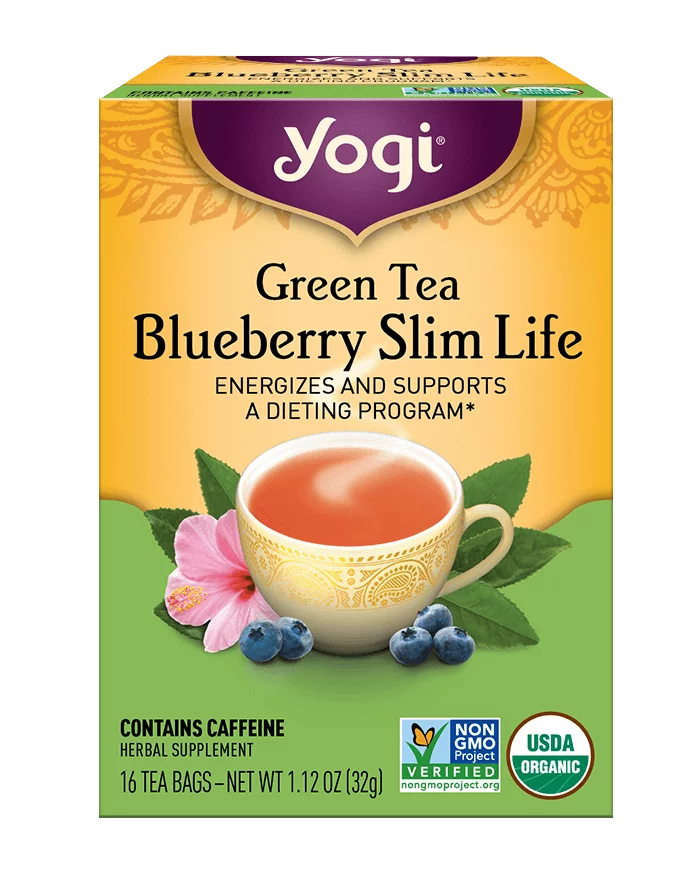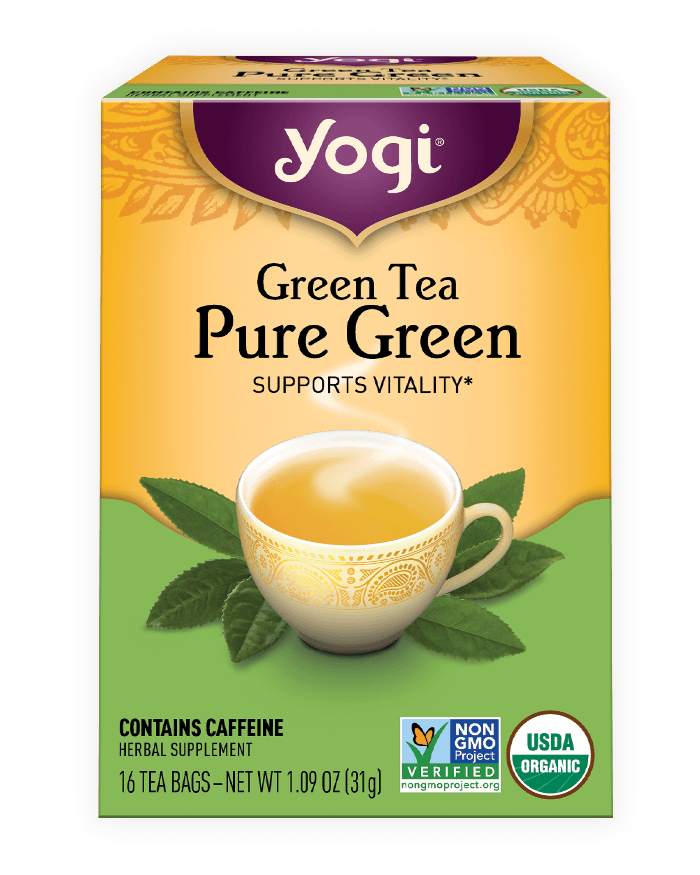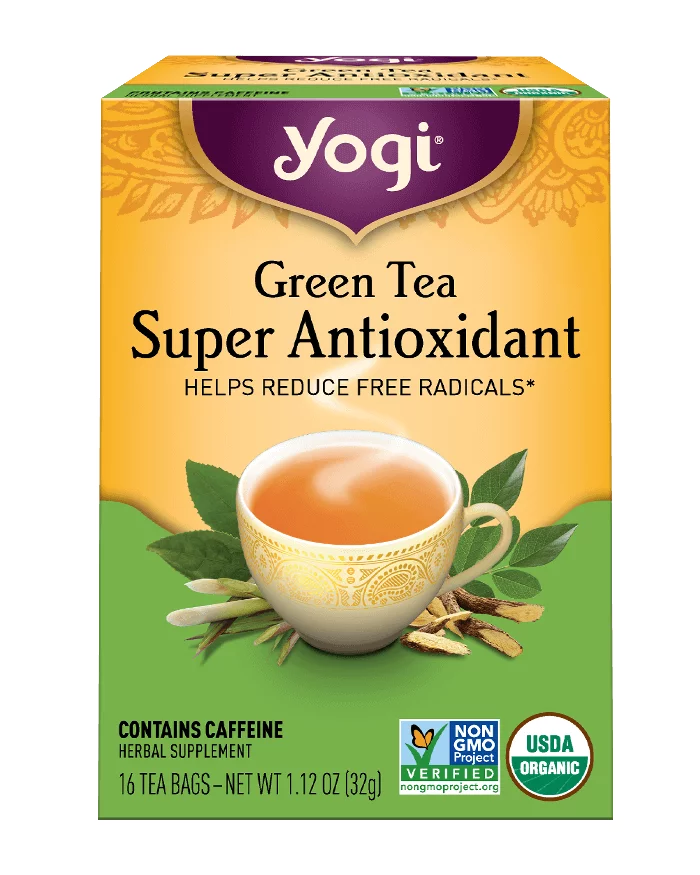
Green Tea
Super Antioxidant Tea
HELPS REDUCE FREE RADICALS*
Yogi Green Tea Super Antioxidant tea is purposefully formulated to supply antioxidants and support overall health. We combine our select blend of Green Tea with Pomegranate Extract, which supplies naturally potent antioxidants. Lemongrass adds bright citrus flavor, while Licorice and Jasmine Green Tea lend sweet and floral notes. Rejuvenate with a fragrant cup of Yogi Green Tea Super Antioxidant tea.*
Each tea bag contains approximately 15 mg of caffeine, as compared to approximately 90 mg in 8 oz of coffee.


Supplement Facts
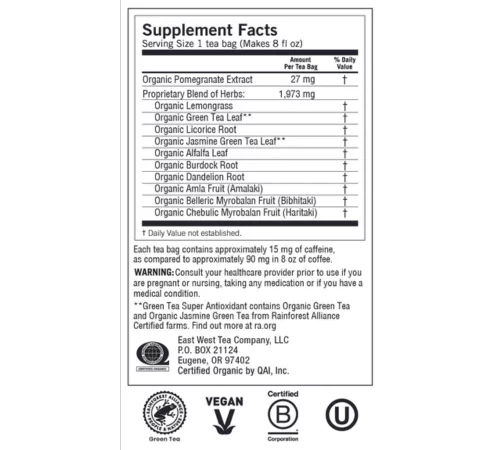
Yogi Green Tea Super Antioxidant Tea Ingredients

Lemongrass
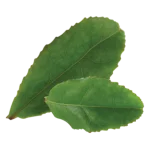
Green Tea Leaf
Green tea is made from the unfermented leaves of Camellia sinensis, the same plant that gives us black and oolong teas. All teas from Camellia sinensis supply antioxidants, but because green tea is the least processed, it is said to contain the most antioxidant polyphenols, which are responsible for its many health benefits.

Licorice Root

Jasmine Green Tea Leaf
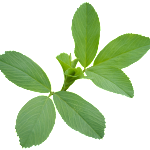
Alfalfa Leaf
Alfalfa Leaf is a nutritive plant in the legume family, which has been used in traditional herbal medicine for over 1,500 years. Also known as lucerne, Alfalfa Leaf has been long prized for its superior vitamin, mineral and protein content. Most notably, Alfalfa Leaf is rich in saponins; plant compounds believed to contribute to reduced cholesterol levels.
With its mild, grassy flavor, Alfalfa Leaf is often enjoyed dried in tea. In Ayurveda, Alfalfa Leaf is typically used for its cooling and astringent properties, and is also considered a cleansing herb.

Burdock Root
Burdock Root - a member of the daisy family that originated in Eurasia - is now firmly established as a naturalized plant in North America. Herbalists value burdock for helping to detoxify the liver. The root is served as a food in Japan, where it is known as gobo. Resembling a long brown carrot, burdock can be prepared in the same way you might enjoy a carrot, such as fresh juice or in a stir-fry dish.

Dandelion Root
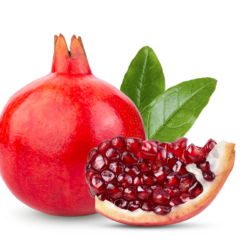
Pomegranate Extract
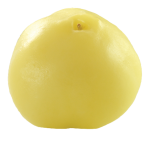
Amla Fruit
Amla Fruit, or Emblic Fruit (Amalaki), is one of the most commonly used herbs in Ayurveda. A sour fruit that is native to India, its flavor is much like an apricot. Amla Fruit is typically used in Ayurvedic as a remedy for inflammation, and is also prized for its cooling properties.
A strong rejuvenative, Amla Fruit supplies antioxidants and Vitamin C, and can also help support digestive function. Additionally, Amla Fruit is the basis for an Ayurvedic rejuvenative jam called chyavanprash, and the widely-used combination herbal blend, triphala.
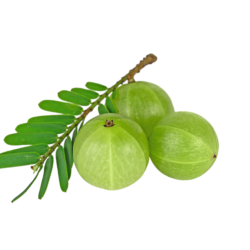
Belleric Myrobalan Fruit (Bibhitaki)
Belleric Myrobalan Fruit (Bibhitaki) is one of three renowned fruits of Ayurveda (joining Amalaki and Haritaki), and one of three herbs in the widely-used Ayurvedic remedy, triphala. The Bibhitaki fruit is most commonly grown in the forests and plains of India, and is known for its astringent quality and sour taste.
In Ayurveda, Bibhitaki has been traditionally used to support the digestive tract and general digestive functions, but can also help to support the urinary and respiratory tracts. One notable property of this Ayurvedic fruit is that it is prized for both its laxative and astringent effects; characteristics not typically found within a single herb. With its warming energy, Bibhitaki is considered one of the best herbs for managing a Kapha constitution.

Chebulic Myrobalan Fruit (Haritaki)
Chebulic Myrobalan Fruit (Haritaki) is considered by some to be the single most important Ayurvedic herb, and is one of the three herbs in the famous Ayurvedic remedy triphala. Widely used in Tibetan medicine, it is called the king of herbs, and in Ayurveda, haritaki is known as the mother. Haritaki is strongly astringent, and is used to promote skin function, as well as to support digestion and elimination. Haritaki is also mildly laxative.








